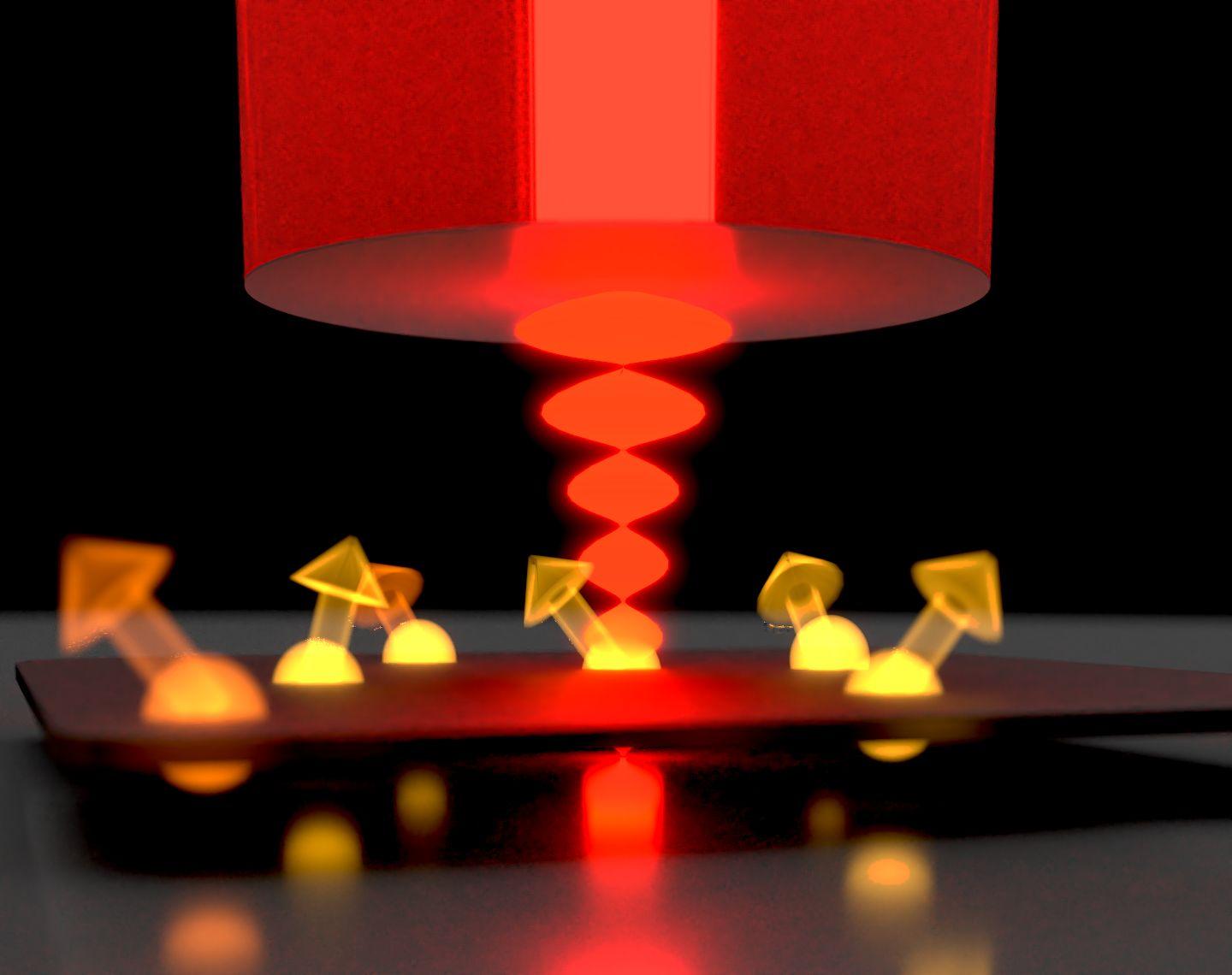 Laser light can be used to optically read out quantum registers based on spin states of single rare-earth ions in a crystalline membrane. Courtesy of Thomas Huemmer.
SQUARE, which is funded by the European Commission, is aimed at establishing which rare-earth ions can be used as basic building blocks for scalable quantum technologies. In particular, the SQUARE project team plans to demonstrate functional elements of a multiqubit quantum register that can be read out optically and to realize the building blocks of a quantum network. In cooperation with industry partners, the SQUARE team will develop central technological components required for scalable implementation.
Laser light can be used to optically read out quantum registers based on spin states of single rare-earth ions in a crystalline membrane. Courtesy of Thomas Huemmer.
SQUARE, which is funded by the European Commission, is aimed at establishing which rare-earth ions can be used as basic building blocks for scalable quantum technologies. In particular, the SQUARE project team plans to demonstrate functional elements of a multiqubit quantum register that can be read out optically and to realize the building blocks of a quantum network. In cooperation with industry partners, the SQUARE team will develop central technological components required for scalable implementation.
Rare-earth ions can store quantum states for a very long time and can be activated separately by light in special solid-state crystals. For these reasons, a large number of ions are accessible as qubits.
“Thanks to their special electronic structure, rare-earth ions are shielded against interference fields,” said professor David Hunger. “Moreover, they can strongly interact with each other, which is a major basis for quantum circuits.”
Research relating to single rare-earth ions still is in an early stage, but “the project concentrates on a highly promising platform that offers many advantages over established approaches, such as ions captured in vacuum devices and superconducting quantum circuits,” Hunger said.
The European Commission is funding SQUARE within the framework of the Quantum Technology Flagship. Over 10 years, the Flagship plans to invest a billion euros into research relating to quantum technologies. Through its investment, the Flagship hopes to accelerate development of novel technologies based on elemental quantum effects.

